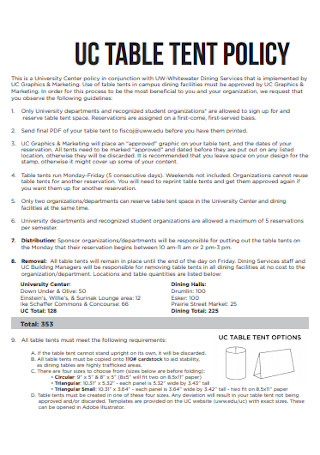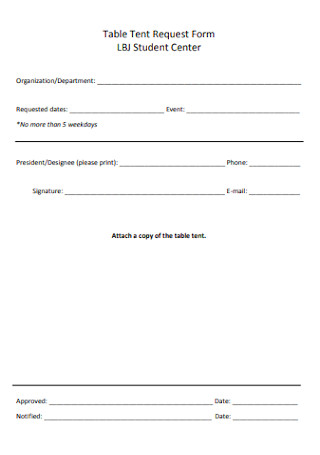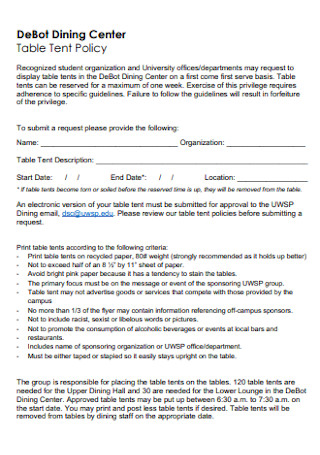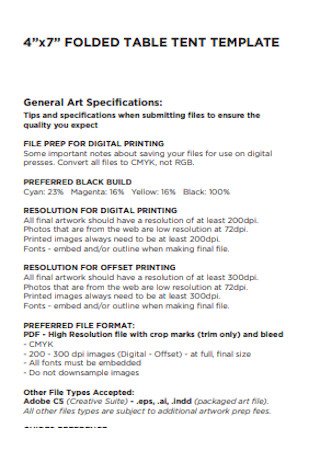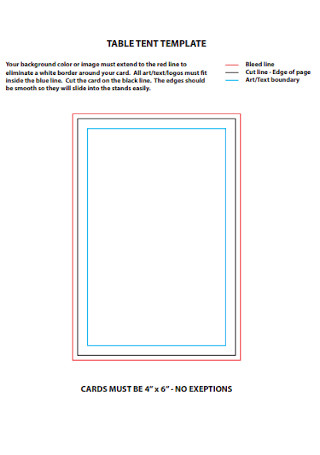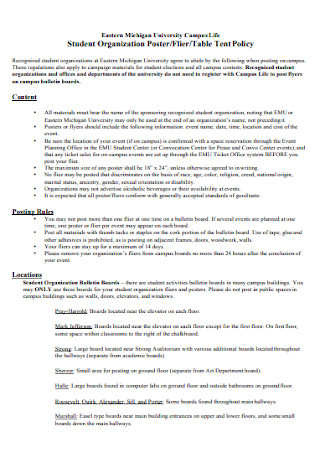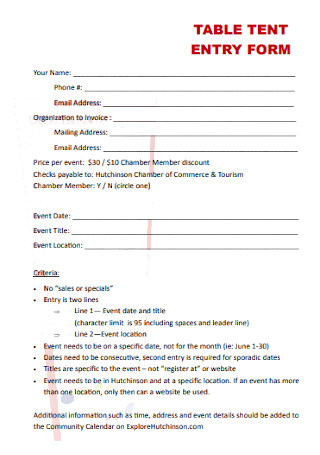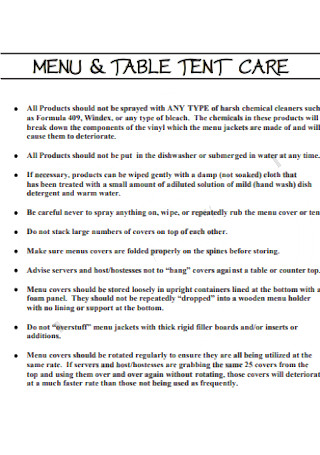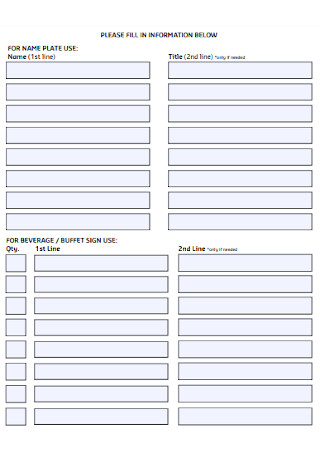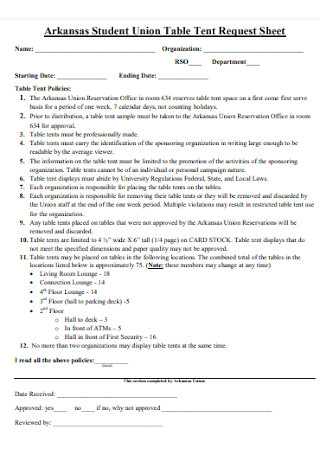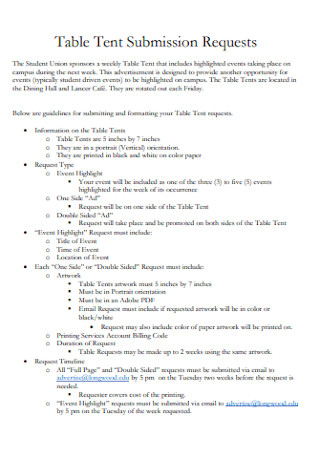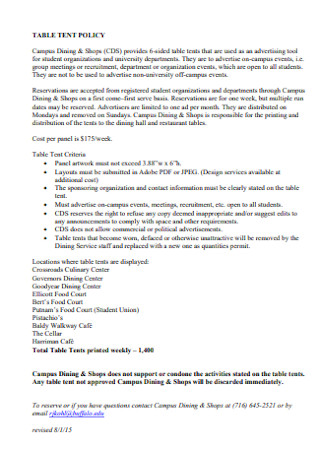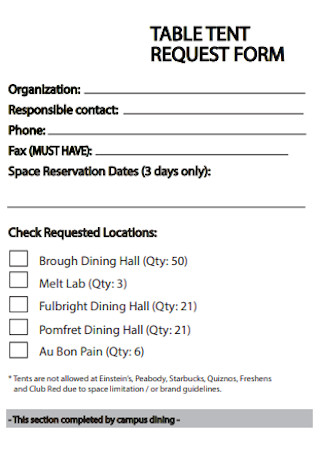FREE Table Tents s to Download
What Is a Table Tent?
A table tent is a small to medium size physical display that’s commonly used in advertising. It is placed on countertops, tables, and anywhere there is high customer traffic. In a way, it can be considered a mini billboard.
According to a Forbes article, a study by Bangor University and Millward Brown compared the effects of both print and digital media. The findings suggest that physical material is more internalized by the brain and in effect, feels more ‘real’ to consumers when compared to digital media.
Uses of a Table Tent
The purpose of a table tent is basically to inform and advertise. Despite the digitization of everything, including marketing, table tents are still one of the most basic and time-honored strategies in use today. They are particularly useful in the following situations:
Restaurants: Restaurants use a variety of methods to promote their brand and food. The food and beverage industry have no less adapted to the digital era; by offering convenient online booking, reservations, delivery, etc. But when it comes to the actual dining in, it is best to meet the customers where they are. This means finding the most convenient way for them to know what you want them to know. Table tents serve such a purpose.Restaurants, hotels and resorts all make use of table tents because it is both informative and convenient for the customer; and sometimes even for the server. A café at a hotel lobby may use table tents to advertise daily high tea promos. A high end restaurant may distribute table tents on every table to inform customers of their weekly specials. Events and Parties: An event organizer’s main concern is making sure guests are at ease and checking if the event is smooth sailing. Whether it is an intimate cocktail party or a big wedding reception, table tents make useful labels and aid in the overall event preparation and organization. They are commonly placed on the the dining table informing the people seated of the menu, seating assignments, etc. Table tents also make effective name plates for food at the buffet.
Components of Table Tents
Table tents are fairly straightforward. However, the actual output or finished product is only one aspect of an entire process. There are different elements that you need to consider before you decide on printing a table tent. The following are some important elements when it comes to producing a table tent. It’s imperative you take these into account and communicate any needs and expectations to your printer or supplier.
Logo: It’s important for any business to establish familiarity. Customers need to be able to recognize brands and familiarize themselves with your restaurant or business. Always include a logo and ensure it is streamlined for all marketing material, not just table tents. Avoid the common pitfalls of printing logos like having stretched or pixelized logos; or ones that are too small and unreadable to the customer. Design and Layout: Perhaps one of the most important elements to consider is the overall look of the table tent. It is advertising, after all. Customers need to be drawn to it. If your table tent is forgettable and mediocre, then it will only be a complete waste of time. Information: Equally important is the text printed on your table tent. This may include the promo details, duration of the promo or event, price points, contact information, location, and any other information that may be useful to the customer. QR Code: Some businesses include a QR code on their table tents for their customers to scan. Providing clients with a digital option is always a good idea. If you can integrate traditional and digital in your marketing collateral, then why not? Pictures: Appealing and high quality photos are a must in every table tent. Quantity and the idea that ‘the bigger, the better’ do not always have to apply in this case. But having a focal point in your table tent can effectively catch and keep the customer’s attention. Pictures can pique curiosity and help keep customers interested. Basic Information: When it comes to the process of developing a table tent, the usual business practice is to outsource the printing and production of the item. Printing companies usually already have standard request forms for clients to fill out. If you are a printing service or an organizing committee, always include the basic information of the requestor, the name of the organization, and contact information. School cafeterias (or those in charge of regulating campus promotions) usually give student organizations or external groups opportunities to advertise their cause, advocacy, or event. Dining halls and cafeterias are an ideal battleground for simple advertising. Dimensions: For both the client and supplier, both need to ensure that the right size and specifications are documented in writing. If you are the one who needs the table tent, it’s best to double or triple check the final design before having it printed. It will save you any unnecessary inconvenience. Quantity: If you are the client, indicate how many pieces you want printed. If you are the printer, make sure your request form includes the quantity. Many restaurants place one table tent on every table in the room. The convenient size of a table tent makes transportation and transfer easy. Location of Display: This is applicable to organizing committees or event planners. Especially if it’s a big dining hall, organizers usually require advertisers to indicate the specific location of where they intend to display their table tents. Even for restaurants, where the table tents are displayed is crucial. The location needs to be a place of high or frequent traffic. Type of Material: There are standard materials that businesses commonly use for table tents. It is best to do prior research and decide what type of material suits your advertising needs. Do you want it thick and durable? Do you prefer it to be waterproof? Indicate your preferences in the request form; or at least ensure that you convey your instruction to your supplier/printer. Some of the common materials used are acrylic, sintra board, or even just regular cardboard. Lead Time: Suppliers need to inform their clients of the printing timetable and expected delivery times. It is also the client’s responsibility to allot enough time for the vendor to print the items. The lead time may depend on a number of factors including quantity, material sourcing, intricacies of the design, etc. Other Special Instructions: Some businesses want to ensure that their table tents align with their brand. And this often means adhering to a higher standard and better quality. Table tents may have a glossy or matte finish. You should also specify whether you want the text printed on both sides back to back, or on one side. Billing Information: It’s protocol for suppliers to provide billing information to their clients. A billing statement is typically sent either before or at the end of production, depending on the arrangement made between the two parties. If you are the supplier, make sure to include your contact information, a breakdown of the items, along with their corresponding descriptions and amount.
Tips in Creating a Table Tent
Readable Font: Table tents are meant to be held in the hand and read from a close distance. Texts that are too small can easily be dismissed by the customer. Overly stylized fonts can sometimes be a hindrance to reading. You want to send a clear and straightforward message with your advertisement. This means using the appropriate font as well. Eye Catching Graphics: The photos and design you choose can either make or break your advertisement. Make sure to use appealing and high quality pictures. The colors you choose should also be interesting and captivating. All of these are part of branding. To deliver a clear and consistent message, businesses need to establish a brand and adhere to certain practices when it comes to marketing. Your brand becomes the basis of all promotional material, including table tents. Avoid any misleading or outdated information, or anything that does not align with the brand. Symmetry: Part of effective design is the layout. It’s a common mistake to neglect spacing and margins. Symmetrical design is more appealing than random or disproportionate designs. Your text and photos should be aligned and situated neatly. Limit the Text: Your table tent should only include the essential information. This should state the who, what, where, and when of the event or advertisement. You may also include brief descriptions, mechanics, and contact information. For example, if a restaurant is holding a Buy 1 Take 1 Happy Hour promo, only include the necessary details such as the promo period, drink list, etc. Request for a Mock Up: When you are having your table tent printed by an external party, it’s good to request for a mock up or sample design. This will give you a better idea of the expected output and will make it easier for you to address the necessary changes before it goes into the final production phase.
How to Create a Table Tent
To be able to create a table tent, it’s best to start with the right information. Having the details ready will make it easier for the rest of the requirements to follow, such as the design and layout. Sample templates are widely available and can easily be customized to suit your needs. The simple step-by-step guide below will help get you started in no time:
Step 1: Information
First, establish your objective for making a table tent to begin with. What will it be used for? What information will go on your table tent? What promotion do you want to advertise to clients and customers? What upcoming event are you preparing for? Settle all the important information before proceeding with the look and design of your table tent.
Step 2: Design
There are dozens of downloadable and online applications that you can use to create a table tent. You can opt to design one yourself or have a graphic artist design it for you. The layout of your table tent will be the vehicle in which your information will be conveyed. A dull and unattractive design will not immediately catch a client’s attention, or won’t do anything at all. No matter how small and basic the table tent is, every space in it is genuine advertising space and should therefore, be maximized.
Step 3: Production
If you plan on outsourcing the printing service to handle the production of your table tents, this step entails finding the right supplier for the job. If it’s your first time, it’s wise to get sample quotes from various vendors just to keep your options open. Compare and contrast these prospective suppliers and pick the right one that addresses your needs. Consider the following when choosing a printing service: customer service, reviews from other clients, social media pages, and response rate.
Usually, how positive or negative these factors turn out to be are tell-tale signs of either a reliable or poor business partner. As a client, you should not only demand value for your money, but also look for a trustworthy and dependable partner. If your table tents only require small scale production and you don’t necessarily need a printer, make sure your equipment can handle the printing and deliver the right colors and specifications.
Step 4: Print and Display
If possible, ask for a mock up when dealing with a potential supplier. This should give you a general idea of how your final output will look like. Once you’ve placed the orders and received the table tents, knowing where to place them is key. Most restaurants and hotels place table tents on each and every dining table and bar countertop. It’s important to note which areas are guaranteed to have frequent and expected traffic. Where you display your table tent should be a prime location, where the likelihood of sitting or passing customers is high.
FAQs
What size is a tent card?
A standard table tent is a 4” x 6” card. Then again, it can always be customized depending on one’s business needs. However, it should typically be small and lightweight enough to be displayed on a table or countertop.
A table tent menu is most often used during events or social gatherings. A common scenario is a wedding, wherein table tents are placed on the guests’ table containing the menu for the reception. Restaurants advertise their food on table tents, especially if it’s part of a seasonal promo. For instance, a bar may have several table tents that lists down drinks which are offered in their ‘Ladies Night’ promo.
What is a table tent card?
A table tent is a promotional and marketing tool. It can be made from various material and folded to create a stand-alone display for tables, countertops, etc. They are commonly used to advertise offers, discounts, events, and other promotions.
Print media is still very much relevant in some aspects. Depending on the nature of the business, a table tent can effectively inform customers, plain and simple. Table tents also allow businesses to showcase their creativity and resourcefulness. Browse any of the template guides above to create yours now!
